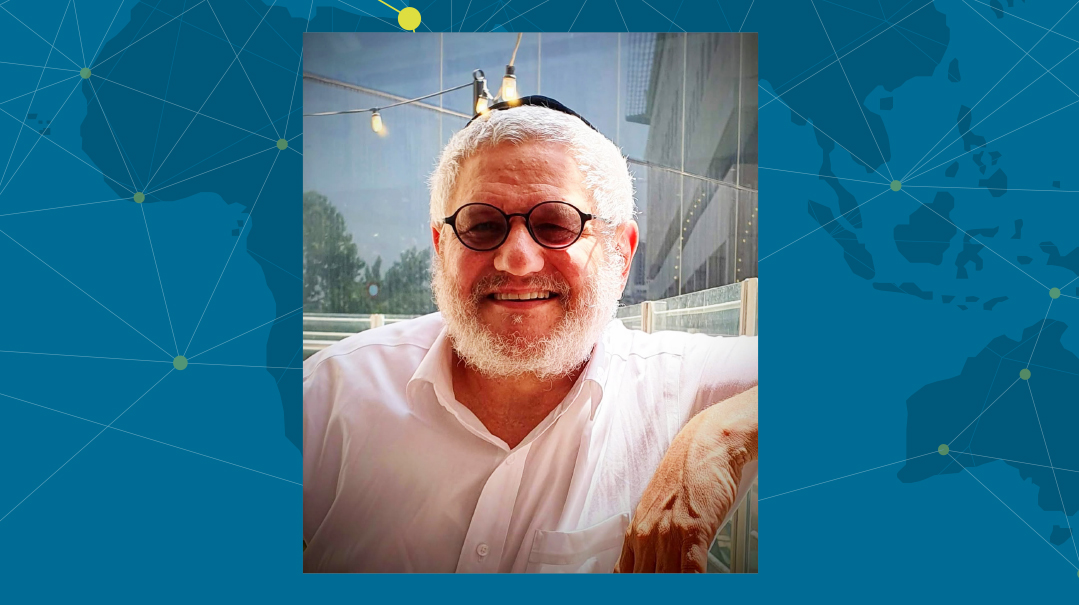Ambassadors of Love
| October 8, 2024The Loving Classroom initiative of David Geffen a”h seeks to create a new reality around the globe

Photos: Family archives
Imagine a perfect world, in which individuals and nations are at one with each other, working together to cultivate harmony, peace and fulfilment for all. Sounds utopian? David Geffen a”h of Ramat Beit Shemesh didn’t think so. Driven to mend the strife he saw in Israel, his Loving Classroom initiative seeks to create a new reality around the globe, one student at a time.
There was something wrong with Kagiso Mabalane. The school behavior of the young boy in Soweto, South Africa, had taken a steep nosedive — and nobody could work out why. He’d been a straight-A student, always respectful and conscientious. But now Kagiso was seriously slacking, refusing to comply with school staff, fighting with his peers, and facing suspension by the school’s disciplinary panel.
“The boy I saw at that hearing was not the Kagiso I knew,” says Mr. Mabaso, his teacher. “He was so rude and didn’t care what would happen to him. It seemed like he had given up on life.”
Was the boy harboring some secret? Some trauma? “I asked the panel to allow me to talk to him privately before they took action,” Mr. Mabaso relates, “because I remembered the Loving Classroom session we had about listening. I knew from the training that painful behavior comes from people in pain. I wanted to find out what his pain was.”
Alone with his teacher in a side room, Kagiso broke down, revealing his excruciating — but sadly not uncommon — story. He lived alone with his mother in the Soweto slums. A few weeks earlier, his mother hadn’t woken up to see him out to school. When he came home from school, his mother was still “sleeping.” At that point, Kagiso felt her and realized she was dead, victim to one of the many diseases that run rife in the impoverished sprawling shantytown. Not knowing what to do, the young boy left her body there and kept returning to school, crying himself to sleep at night while his deceased mother lay in the next room.
But the positive relationship tools his teacher had learned turned out to be Kagiso’s salvation. “Once Kagiso opened up to me, I reached out to the people from Loving Classroom for more specialist support,” says Mr. Mabaso. Kagiso’s mother received a burial and her grieving son was given therapeutic care and placed with a supportive adoptive family.
You might not have heard of Loving Classroom, but this worldwide movement actually has a very simple, yet all-embracing premise: to train teachers to cultivate loving classrooms by emphasizing respect, compassion, kindness, listening, gratitude, love, friendship, and care. The short-term goal is for these qualities to change relationships in the classroom; the long-term goal is nothing less than to change relationships among the 200 nations around the world.
Improbably, this global vision isn’t the product of some well-funded, United Nations-affiliated NGO, but the life’s work of a self-effacing couple — David a”h and Naomi Geffen — from a quiet side street in Ramat Beit Shemesh who channeled their own concern about the rampant divisions in Israel into something that could bring healing to the Jewish people and far beyond. The end result of David’s long intellectual Torah quest, the curriculum — which Rav Yitzchak Berkovits, rosh yeshivah of Aish HaTorah called, “The most important, inspirational and powerful” he’d ever seen — has spread its wings.
Loving Classroom is now being delivered in four countries: South Africa, Kenya, Israel, and the UK. Two years into the program, South Africa’s department of education ran an independent evaluation of 25,000 students, and found that in junior and senior schools, bullying was down 85 percent, violence and fighting was down by 77 percent, class disruption was down 80 percent, and pass rates improved by 17 percent.
The Geffens, who initially ran workshops on conflict resolution, soon realized that creating positive relationship education in schools could practically serve as early intervention and prevention of conflict by identifying and boosting the innate goodness in all students, so that they interact with respect and kindness, paying it forward for all people — and for a very challenged world. David Geffen’s hashkafah-driven worldwide vision for a world in which people are more accepting, more understanding, and ultimately more loving is being realized, one classroom at a time.
“David was consumed by a lifelong passion to understand social issues, and why people don’t get along,” says Naomi Geffen of her husband, who passed away last year. Having observed decades of discord on the Israeli social and political scenes, David’s life mission became an insatiable drive to solve those problems through positive relationship education based on simple yet eternal Torah principles. And as a war-weary Israel descends once again into strife, that mission seems more relevant than ever.
“He wanted desperately to see an end to division in order to be one with Hashem,” says Naomi. “His life’s work is a clarion call to all of us to get involved.”
Oops! We could not locate your form.

